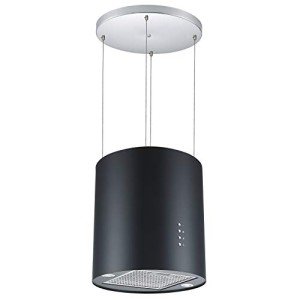5 Island Vent Hood Projects For Every Budget

How to Ventilate an Island Vent Hood
Suspended from the ceiling, an island vent hood helps flow air and keeps your kitchen totally free of smoke and smells. It's also a trendy function that improves your cooking space.
Ventilation types consist of external venting, which pushes air through ductwork to the exterior of your home, and recirculating designs that filter and recycle cooking fumes. pop over to this website can even be transformed between one and the other.
Ventilation
Unlike wall-mounted range hoods that vent air vertically through the wall to the outside, island vent hoods utilize ductwork that goes through the ceiling to exhaust the cooking location to the outdoors. The difference is that they can likewise be used to recirculate air.
Discover our choice of industrial and designer custom hoods with effective ventilation systems. With personalized specifications, find the best hood for your kitchen space.
Dacor's ConnectOn auto-responsive technology turns on the hood and increases the fan speed in response to the cooktop, providing effective efficiency while utilizing very little sound. It's simply another manner in which you can cook with self-confidence. Include a touch of modern-day with this stainless steel pyramid-style wall-mount canopy hood. This hood with dignity accentuates advanced kitchen areas that follow a more standard design style and clarifies of smoke, steam and cooking odors.
Style
Unlike wall-mounted range hoods that are mounted versus the wall, island vent hoods are suspended from the ceiling over an island or peninsula cooktop or range. They also use ductwork to exhaust air out of the home. This design is best for kitchen areas that have a great deal of open space, and it assists to include visual interest to your room. This new home features Blackberry stained cherry cabinets on the criterion, and a natural stacked stone on the island and vent hood to match the Gunstock stain on the cabinets. 10ft ceilings and a skylight help to keep the kitchen bright and spacious.
Noise
While an island vent hood does a wonderful job of filtering smoke, grease and smells out of your kitchen, it can also produce some noise that disrupts the tranquility of your cooking area. Luckily, there are some methods you can use to lower this sound and allow you to prepare in peace.
Among the primary causes of excess range hood noise is brought on by fan motor issues such as stiff bearings or badly lubricated fans that produce a loud humming noise. Ductwork can also add to this issue especially if the ducts are too small or if they are obstructed with dust.
The very best way to lessen noise is to guarantee that your vent hood has the greatest airflow score that you can afford. The Home Ventilating Institute (HVI) recommends an airflow rate of 100 to 250 cfm for wall-mounted hoods over 30-inch wide ranges. This hood must also have a multispeed fan to permit lower fan speeds during light cooking. Among the most basic methods to minimize the noise is to ensure that the ducting is smooth-walled, as corrugated duct restricts air flow. You need to likewise keep the duct runs as brief and straight as possible to avoid any kinking.
Installation

Ventilation of island range hoods is a various process than wall-mounted systems, considering that they are suspended from the ceiling over an island or peninsula cooktop or range. They generally require a duct that goes through the ceiling and out through the roofing system, which can be a complex project for an unexperienced house owner.
In addition, they need to be set up a minimum of 24-inches to 36-inches above the cooking surface. The height might vary, depending on the size of the hood and the ceiling. If you have existing ducting and electrical wiring in the kitchen ceiling, this type of vent hood is relatively simple to set up. If not, it's suggested that you seek advice from a professional.
To begin installation, ensure the hood can fit through the opening you have actually chosen for the vent and that it's the ideal width to accommodate the ductwork and exhaust. If the hood is too wide, it can reduce the efficiency of the vent and will increase sound levels. Next, cut a little hole in the ceiling and utilize a wire cutter to inspect that there's no pipes or electrical wiring near the hole. If there is, think about employing a professional for the task or switching to a recirculating unit.
If there isn't, you can start the larger vent hole by drilling locator holes with a drill and a 1/2-inch masonry bit in each corner of the area. Then utilize a jigsaw to cut the larger vent hole. Finally, include a drywall patch and paint to finish the task. When the hood is in place, you can run the electrical wiring and link it to your breaker box. Follow your manufacturer's instructions for complete setup information.
